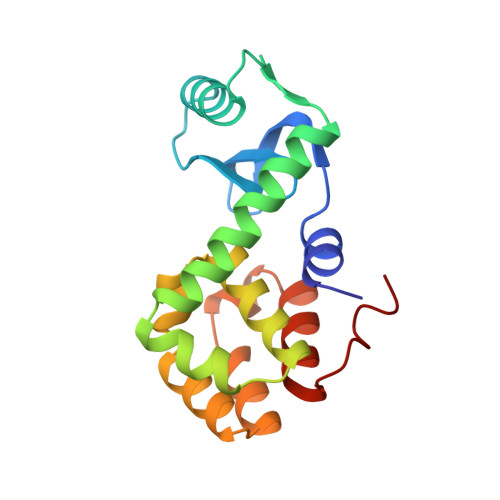Enhanced protein thermostability from designed mutations that interact with alpha-helix dipoles.
Nicholson, H., Becktel, W.J., Matthews, B.W.(1988) Nature 336: 651-656
- PubMed: 3200317
- DOI: https://doi.org/10.1038/336651a0
- Primary Citation of Related Structures:
1L19, 1L20 - PubMed Abstract:
Two different genetically engineered amino-acid substitutions designed to interact with alpha-helix dipoles in T4 lysozyme are shown to increase the thermal stability of the protein. Crystallographic analyses of the mutant lysozyme structures suggest that the stabilization is due to electrostatic interaction and does not require precise hydrogen bonding between the substituted amino acid and the end of the alpha-helix.
Organizational Affiliation:
Institute of Molecular Biology, University of Oregon, Eugene 97403.














